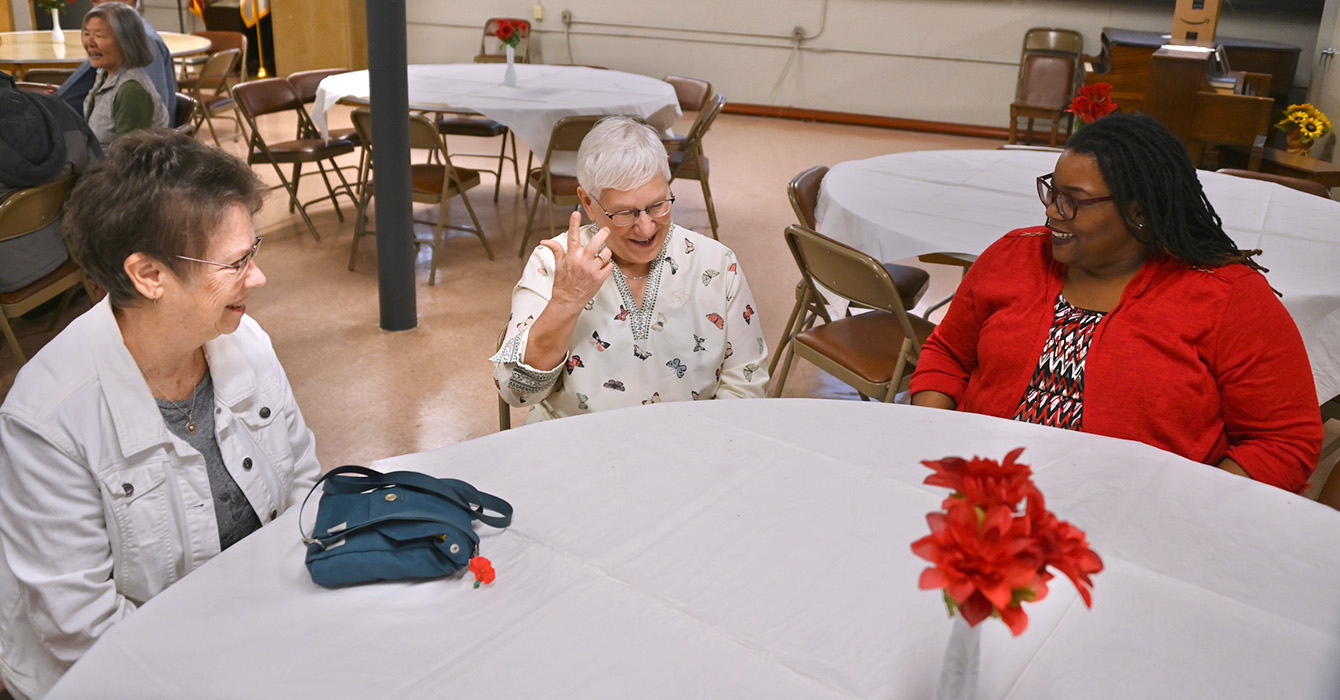I recently had a conversation with a pastor about her first month in a new church. Smiling, she responded, “Well, I’m still in the honeymoon phase, so things are going great!” I was awkwardly silent in response, so she eventually filled the quiet with, “No, no … it’s going well. I really like this church.”
Why was I silent? Because I don’t know how to respond to the “honeymoon phase” narrative. Since when is the honeymoon the apex? When asked about your marriage, have you ever responded, “Well, we’re no longer on our honeymoon, so it’s pretty dismal”? We don’t benchmark our marriages against the honeymoon experience, so why would pastors benchmark their ministries that way?
The honeymoon story is just one of the negative narratives that pastoral leaders adopt, often without recognizing the power of such stories to diminish a ministry. Some common negative narratives I’ve heard:
“At some point, your church will disappoint you, so be prepared.”
“You need to find a church where you fit.”
“They said they wanted to change, but they really didn’t.”
What’s wrong with these narratives? They’re pessimistic, somewhat narcissistic and often self-defeating. They focus on what’s wrong, not what’s right.
In my one-on-one and group work as a clergy coach and spiritual director, I’ve been increasingly integrating insights from a form of psychotherapy called narrative therapy.
This therapy, explained in Gerald Monk’s book “Narrative Therapy in Practice: The Archaeology of Hope,” helps clients respond to life’s challenges by exploring insights from past successes rather than focusing solely on past problems and failures.
As pastors, we add a few new chapters to the unfinished stories handed down by our predecessors. How will we frame those chapters? Will they be discouraging and dysfunctional, expanding the negative themes? Or will we craft a new, surprising vision that offers hope and possibility? Here are some insights I’ve gained from integrating a narrative form of clergy coaching and spiritual direction.
Don’t try to implant other stories into your context; start with your church’s story. Like me, you may have envied the story of the large, nondenominational church that exploded under the guidance of a charismatic pastor. Or maybe you are stuck on the tale of the small, idiosyncratic emergent congregation -- highly successful in its own way.
We want such stories to be our stories. But they aren’t. We’re likely leading churches that are 50, 100, 200, 300 years old; they have their own histories, often of cyclical rise and decline.
In my work with pastors, I’m surprised at how many of them don’t know their churches’ histories or don’t see how those histories still influence their congregations today. I recommend that you first sit down and talk with members about what they remember and know. Then your task is to write new chapters of an old book, grounded in a particular history.
Recently, I’ve been working with a pastor of two small churches. One church frustrates him because it resists his attempts to be missional. The other is missional -- as long as that mission involves food.
As we explored their respective histories, we discovered that the first church started in 1798 as an Appalachian frontier church supplied by itinerant preachers. It was a place to gather on Sundays for people eking out an existence, and it has remained that way.
It’s not surprising that the church has not changed. Its way of being church is part of its DNA. So the pastor and I have discussed an approach in which he accepts that it is going to be mainly a Sunday church with some minimal mission. Perhaps that sounds like a bar set too low, but all attempts to make the congregation something other than that have failed for more than 200 years.
The pastor’s other congregation began in the 1830s as a farming church. It’s always been great at sharing food and resources. So we have talked about his leading that church as a food-mission church.
Start with the characters you have, not the ones you wish you had. Good authors write about characters who arise naturally from their stories’ contexts. Similarly, good pastors work with the members we actually have and help them become what’s possible for them to become, not who we wish they’d become.
Years ago, members of a Vermont church told me how a licensed lay pastor had helped them write a new, vibrant chapter for their declining congregation. He’d called a congregational meeting to talk about their gifts and how they could use them.
They had responded, “We don’t have any gifts. We’re just a bunch of old grandparents!” He’d said, “What if that’s your gift?”
They had decided to start an after-school program for the children of single-parent and double-income families in their town. These “grandparents” watched movies with the kids, played games and baked cookies with them, and helped them with their homework. Slowly, the children began showing up at church on Sundays to sit with their “grandparents,” and the church began to grow again.
Root the new narrative in the church’s self-narrative. How often do we reflect on what a congregation believes about itself? In working with another pastor similarly frustrated with one of his two churches, I asked him what narratives his congregations had about themselves.
He said of the one that was doing well, “I think they see themselves as a church of faith.” So what should his leadership narrative be, I asked? He said, “I think I’m called to move them from faith to action.”
When he considered the other congregation, he said, “I think their narrative is that they’re afraid of everything.” So how could he lead them? “I think I’m called to lead them from fear to faith.”
Reflecting on both churches, we realized that he had to be an intentionally different pastor for each church: a cheerleader and guide for one; a pastor who said, “I love you, God loves you, and you can trust us both to be with you” for the other. The latter role might not be as gratifying as the former, but it’s just as crucial.
Narrative therapy has helped me recognize that from seminary onward, many of us have been steeped in tales of failure that become self-fulfilling prophecies.
I think we can craft alternative visions. We can tell stories about our future that are based on faith, hope and love for who our congregations actually have been, and who they are.
















